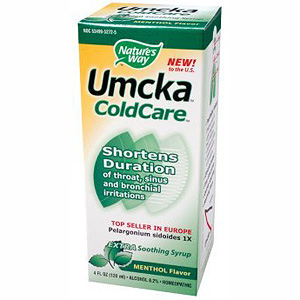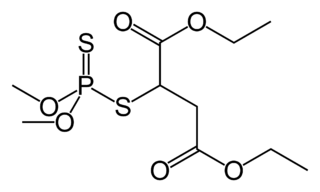PLANT DESCRIPTION

Pelargonium (commonly called geranium) is a genus including more than 200 evergreen perennial plants indigenous to South Africa. Largely used in traditional medicine by native populations, these flowers were first recorded by early explorers in the 17th century and then brought to Europe, where their resistance to mild weather helped their diffusion as ornamental plants. All Pelargonium roots and tubers have been used mostly for diarrhoeas and dysenteries (astringent properties), but also for wounds, fevers, kidney complaints, respiratory diseases (including tuberculosis)
Its properties have been studied throughout the late centuries in botanical gardens where its aromatic characteristics were noticed too, Pelargonii extracts are still used in the perfume industry.
Pelargonium sidoides (commonly known as South African Geranium) stands apart from the rest of the genus, not only because of the dark, maroon-red to black petals, but also in the fact that it has been the most studied, and its extract was developed into a highly successful, evidence-based phytomedicine: it’s aqueous-ethanolic extract is marketed as Umckaloabo®, Kaloba®, Umcka® and Zuco® and officially registered as EPs®7630

ACTIVE MOLECULES DESCRIPTION
The main chemical constituents found in P.Sidoides roots are:

- oligo- and polymeric- highly oxygenated coumarins (7-hydroxycoumarin derivatives) namely Scopoletin , Umckalin ( 7-Hydroxy-5,6-dimethoxycoumarin ), 7-Acetoxy-5,6-dimethoxycoumarin, 5,6,7-Trimethoxycoumarin, 6,7,8-Trihydroxycoumarin, 6,8-Dihydroxy-7-methoxycoumarin, Fraxetin, 6,8-Dihydroxy-5,7-dimethoxycoumarin, Artelin
- Coumarin glycosides (Magnolioside, Isofraxoside, Umckalin-7-ß-D-glucoside)
- Coumarin sulfates
- Phenolic and polyphenolic compounds (Phenolic acids, phenylpropanoids and gallic acid-derivatives)
- Gallic acid (Gallic acid methyl ester, Shikimic acid 3-O-gallate)
- Flavonoids (Quercetin, Taxifolin-3-O-ß-D-glucoside, Vitexin, Orientin, Isovitexin, Isoorientin)
- Proanthocyanidins (or Tannins),various compounds are present, all based on gallocatechin and epigallocatechin moieties
- Hydroxycinnamic acid-derivatives

CLASSIFICATION
Kingdom: Plantae – Plants
Subkingdom: Tracheobionta – Vascular plants
Superdivision: Spermatophyta – Seed plants
Division: Magnoliophyta – Flowering plants
Class: Magnoliopsida – Dicotyledons
Subclass: Rosidae
Order: Geraniales
Family: Geraniaceae – Geranium family
Genus: Pelargonium L'Hér. ex Aiton - geranium
Species: P sidoides
INDICATIONS
EPs®7630 is available as liquid drops or in tablets. Oral use.
- Tablets: every pill contains 20 mg of liquid exsiccated Pelargonium sidoides root extract (1 : 8 -10) (EPs® 7630). Extracting agent: ethanol, 12% (v/v).
- Drops: 10 g (= 9,75 ml) of solution contains 8,0 g of EPs® 7630. Extracting agent: ethanol, 12% (v/v).
Dosage: Several clinical trials proved that 60mg EPs®7630 represents the optimal dose for the topic uses of this extract (respiratory afflictions mainly, and in particular acute bronchitis). The same dose is optimal in adults, adolescents and children:
- Pills: 20mg three times per day (three pills a day)
- Drops: 30 drops three times per day
A 7 days maximum therapy is recommended.
Topic uses:
- upper respiratory tract infections and related afflictions
- bronchitis
- tonsillopharyngitis (sore throat in general)
- sinusitis
- pneumonia
- common cold
- cough: P.Sidoides not only helps reducing sputum production thus avoiding severe manifestations of the aboves, but has an important role interacting with any bacterial/viral causes of these afflictions.
- diarrhoeas, dysenteries and other intestinal afflictions (astringent properties and mucose protection from bacterial/viral activity)
Pelargonium Sidoides is also largely used in traditional African Medicine in form of root decoction (boiled), or roasted roots (to be eaten). Aerial parts of the plants (flowers, leaves) are less used, sometimes decoctions are made as well from these parts too.
This plant is used for:
- colic, anaemia, weakness and complications related to dysentery
- wounds
- fevers
- kidney complaints
- Tuberculosis (this point in particular has been studied in recent years, direct evidence based interactions between EPs®7630 and mycobacteria are yet to be successfully demonstrated).
PROPERTIES
Pharmacological studies have suggested that EPs®7630 has a multifactorial mechanism and has three main effects as an antibacterial, an antiviral and as an immunomodulatory
- Antibacterial and antifungal properties (both against Gram+ and Gram- ) [Table 1.]
- Inhibition of bacterial adhesion to mucous membrane cells (studies conducted mainly on group-a-Staphylococci (GAS) and variation of their adhesion capability on human epithelial cells (HEp-2) cultures).
- phagocytosis, oxidative burst and intracellular killing enhanced
- immunological stimulation and modulation:
- TNF inducing capability (mostly TNFα which stimulates acute phase reactions) [Fig.1]
- strong evidence for release of nitric oxides (NO) (produced by all phagocites after IFN and\or TNF stimulation, nitric oxide is secreted as free radicals in an immune response and is toxic to bacteria and intracellular parasites)
- IFN-ß production enhancement, but not induction (EPs 7630 enhance the production of interferon, but cannot induce this production alone, an infection must be ongoing).


- Antiviral properties
- inhibition of virus adhesion to mucous membrane cells.
- cytoprotective effects due to enhancement (and not induction) of IFN production [Fig.2]
- immunostimulation:
- IFN modulation [Fig.4]
- NK cells activation and activity enhancement.
- increased release of antimicrobial peptides (also known as defensins) from neutrophilic granulocytes
- Increased mucociliary system beat frequency


Further properties include:
- Astringent Properties (due mainly to the polyphenolic constituents of the plant)
- Analgesic effects
- Antioxidant: as can be seen in the graph, aerial parts of the plant (flowers, leaves and other parts out of the ground) show higher antioxidant properties. Considering these part have higher concentrations in polyphenols and flavonoids, these are the main compounds responsible for this properties in P.Sidoides.

| Oxygen radical absorbance capacity (ORAC) of acclimatized aerial parts (AA), tubers (AU), wild aerial parts (WA) and tubers (WU) of Pelargonium sidoides extracts. Values represent mean±SE and different letter(s) are significantly different (p≤0.05) based on Duncan’s multiple range test (DMRT). N=5. |
- Uncertain Antitubercular effect: to be studied in detail. Although P.Sidoides has long been used to treat Tuberculosis in traditional african medicine, none of the compounds isolated from P. sidoides showed any significant activity against the responsible mycobacterium. It was postulated that an antitubercular effect may be achieved indirectly by stimulation of immune response. Thus this topic is an interesting point yet to be studied in detail.
- Inhibition of sickness behaviour (anorexia, listlessness, fatigue)
SIDE EFFECTS, CONTRAINDICATIONS, PRECAUTIONS
Side effects are not frequent (1-15% of subjects), they are largely correlated to hypersensibility to EPs®7630 and generally cause mild afflictions:
- gastrointestinal symptoms (nausea, vomiting, diarrhea, heartburn)
- individual cases reactions on the skin (rashes, itching, hives).
- the coumarins so far identified in EPs® 7630 do not appear to possess anticoagulant characteristics: no interaction with anticoagulants and antiplatelet drugs was found. Despite this, many pharmaceutic indications recommend not to use EPs7630 in case of high tendency to bleeding or in concomitance with other drugs (coumarin anticoagulant: fenprocumone, warfarin)
- The extract of P. sidoides root is contraindicated during pregnancy and lactation as no specific data on its effect on pregnant or lactating women is available.
- No interaction with other drugs is shown (a part from the above discussed opinions about coumarins anticoagulant drugs interaction).
TOXICITY
The cytotoxicity of coumarins present in the crude drug and/or extracts can be considered negligible. To date, there are no known drug interactions with the root extract.
No hepatotoxic activity could be established for 7-hydroxycoumarin derivatives (the only coumarins present in EPs® 7630).
In conclusion, several clinical trials demonstrated EPs7630 (preferably under the recommended dose of 60mg/daily) is well-tolerated and safe.
LATE STUDIES:
uses of P.Sidoides as a potent HIV-1 attachment inhibitor
As of August 2012, 23 single-molecule drugs were approved for anti-HIV-1 therapy in the USA by the FDA. The continuous need for the development of new therapeutic anti-HIV-1 agents arises from:
- the rapid emergence of viruses resistant to these drugs.
- necessity for continuous life-long treatment.
Natural products and herbal medicines are a promising source of new therapeutic agents and for the development of complementary and alternative medicines to conventional drug regimens. Although their antiviral properties has long been studied, their ways-of-actions are still poorly understood: they have been considered mainly as sources for isolated single anti-HIV-1 hit molecules, while herbal preparations may also contain unique mixtures of molecules that act in concert to display novel bioactivities.
P.Sidoides was chosen in particular for this study because of his proven safety profile, richness in metabolites and demonstrated activities against various viruses.
Method and Experiment:
- ex vivo cultures of human cells:
- peripheral blood mononuclear cells (PBMC),
- monocyte-derived macrophages (MDM)
- LC5-RIC indicator cells
- each cell culture (with identical initial properties) is exposed to a different concentration of EPs7630
- viral infection: each culture is infected with HIV-1 in the same way -> EASY-HIT technology: it measures antiviral effects of EPs®7630 by measuring infection parameters associated with two temporally distinct steps of the HIV-1 replication cycle
- step 1: expression of early viral proteins (Tat and Rev)
- step 2: release of infectious virions
Additional findings:
- reduced presence of viral material (RNA, DNA, integrated DNA) into cells from infected cultures indicate that PS inhibits virus entry into the cells.
- preincubation of HIV-1 viruses with P.S. extract is more efficient than simultaneous virus+ PS extract exposure
- the same experiment as above was repeated using separate compounds from PS extract, in order to find the most anti-viral molecules, namely flavonoids and anthocyanidins.
- Polyphenols as well, once separated from the PS extract by adsorption to polyvinylpyrrolidone, showed potent anti-HIV-1 activity with low cytotoxicity.
Thus the antiviral activity of PS extract can be attributed to polyphenolic secondary metabolites belonging to the classes of flavonoids and leuco-anthocyanidins. The potent anti-HIV-1 activity and reduced cytotoxicity of the PSPP fraction (PS extract extracted PolyPhenols) indicate that enrichment of polyphenols from PS root extracts eliminates cytotoxic molecules, while retaining HIV-1 inhibitors.

| Inhibiting concentrations and differential activity of pure PS extract and isolated polyphenols |

| PS extract activity compared to other most used HIV-1 inhibiting compounds |

| HIV attachment to cells is shown using green fluorescent protein (GFP): using PS extract and PSPP (PS isolated polyphenols) no attachment is found, partial attachment is found using Griffithsin (GRFT), a typical HIV-1 inhibitor. |
INSECTS REPELLENCY EFFECTS
Essential oils and pure compounds showed insecticidal activity against Stephanitis pyrioides and Aedes aegypti 

The responsible for this outstanding property are the compounds trans-nerolidol (the most toxic compound against one-day-old Ae. aegypti larvae), geraniol, citronellol and geranyl formate. Among the pure compounds, the biting deterrent activity of geranic acid [Biting Deterrent Index (BDI = 0.99)] was not significantly different from that of N,N-diethyl-m-toluamide (DEET).



Essential oil extracted by different varieties showed different properties:
- 'Egypt' essential oil (BDI = 0.8) showed the highest biting deterrent activity
- 'Frensham' essential oil (BDI = 0.76),
- 'China' essential oil (BDI = 0.72)
- 'Rober's Lemon Rose' essential oil (BDI = 0.63)
- 'Bourbon' (BDI = 0.45)
Overall most of these essential oils proved to be more powerful than malathion and neem in their repellency.

Riccardo Cappi
Gianluca Colli
SOURCES: